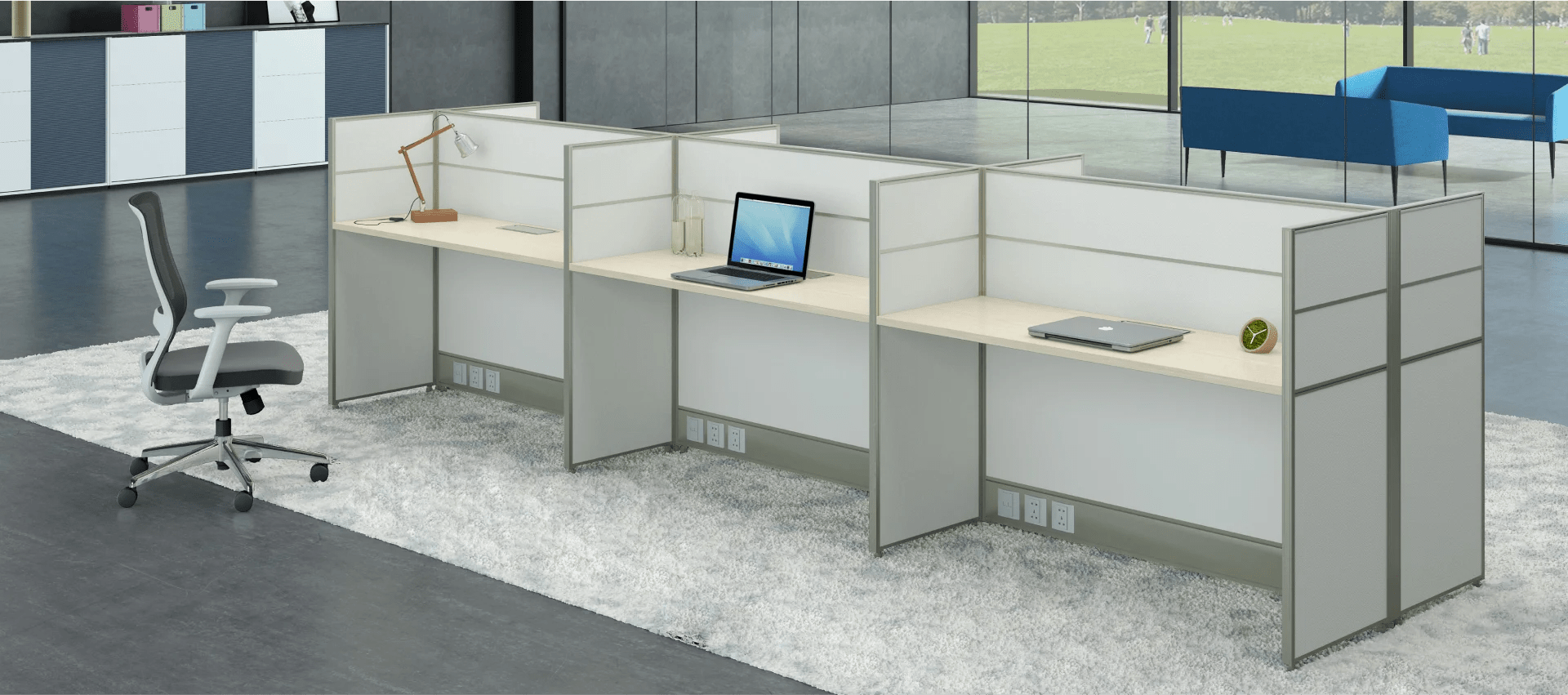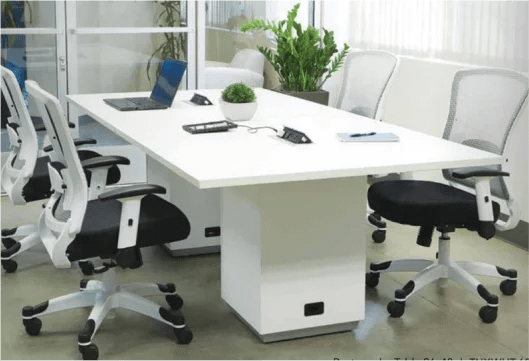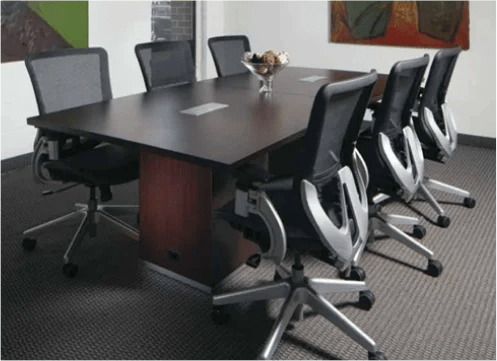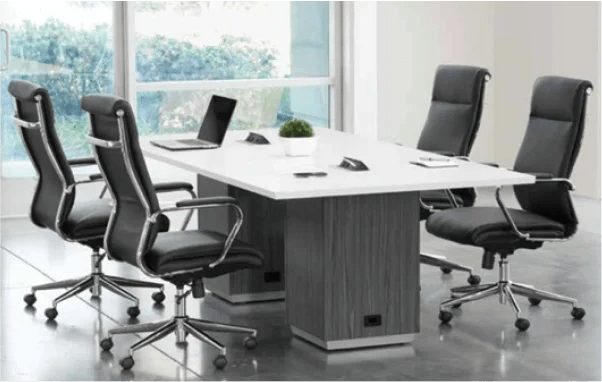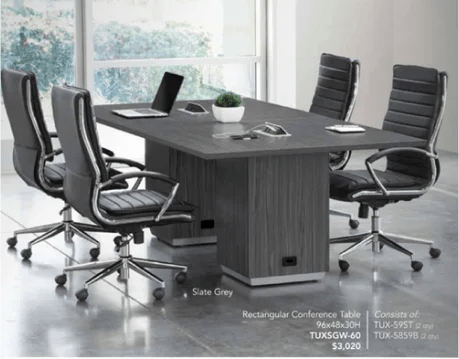- NY Phone: (212) 641-4300 |
- NJ Phone: (908) 300-5664
Adjustable vs. Fixed Office Desks: Which One is Right for You?
Adjustable vs. Fixed Office Desks: Which One is Right for You?

Making the right decision about office desks – whether to go with adjustable (sit-stand) or fixed-height options – is a significant choice for any business. It hinges on factors like your budget, the specific needs of your employees, the constraints of your workspace, and the overall culture of your company. Both types of desks offer distinct advantages, and understanding these pros and cons is key to making an informed decision that benefits your team.
Height-Adjustable Desks (Sit-Stand Desks): The Flexibility Factor
What Are They?
Height-adjustable desks, often called sit-stand desks, empower users to easily change the height of their work surface. This allows them to seamlessly alternate between sitting and standing throughout their workday.
Benefits:
- Boosted Health and Well-being:
- Reduced Back Pain: Regularly switching positions minimizes strain on the spine, offering relief from back discomfort.
- Improved Posture: Encourages an upright and more ergonomic posture, reducing slouching and promoting better spinal alignment.
- Enhanced Circulation: Promotes movement and improves blood flow throughout the body.
- Lower Risk of Heart Disease: Standing has been linked to improved circulation and can help regulate blood pressure.
- Weight Management Support: Encourages more movement, which can contribute to increased energy expenditure and muscle engagement.
- Increased Energy and Focus:
- Combats Fatigue: The act of standing and moving can prevent the sluggishness that often accompanies prolonged sitting.
- Elevated Mood: Standing can stimulate the release of endorphins, contributing to an overall sense of well-being.
- Sharper Cognitive Function: Increased blood flow to the brain can enhance memory, attention span, and processing speed.
- Enhanced Productivity: Employees using sit-stand desks often report improved focus, engagement, and overall work performance. The ability to switch positions can significantly enhance workplace comfort and satisfaction.
- Greater Workspace Control: Employees have the flexibility to customize their workspace to their individual comfort and preferences, fostering a more personalized and adaptable work environment.
Drawbacks:
- Higher Initial Investment: Adjustable desks typically come with a higher price tag compared to fixed-height options.
- Potential for Maintenance: The mechanical components of adjustable desks may require occasional upkeep or maintenance.
- More Complex Assembly: Installation can sometimes be more involved than setting up a standard fixed-height desk.
Best Suited For Businesses That:
- Prioritize the health and well-being of their employees.
- Have employees who value flexibility and the ability to customize their workspace.
- Can allocate a budget that accommodates the cost of adjustable desks.
- Foster an active and dynamic work environment.
- Want to provide a solution for employees experiencing back pain or posture-related issues.
Fixed-Height Workstations: The Reliable and Budget-Friendly Choice
What Are They?
Fixed-height workstations are traditional desks designed with a static height, providing a stable and consistent work surface.
Benefits:
- Stability and Durability: Offer a sturdy and reliable workspace, ideal for tasks requiring precision and a stable platform.
- Cost-Effectiveness: Generally more affordable than adjustable desks, making them a practical choice for budget-conscious businesses.
- Consistency and Uniformity: Provide employees with a predictable and uniform workspace, promoting a sense of routine and familiarity.
- Optimized Space Utilization: Often have a smaller footprint, making them well-suited for compact office environments.
- Ease of Installation and Maintenance: Typically quick and straightforward to assemble with minimal ongoing maintenance needs.
- Enhanced Storage Options: Frequently come equipped with built-in drawers, shelves, and cabinets for improved organization and storage.
Drawbacks:
- Lack of Adjustability: Users are limited to a single height, which may lead to discomfort for some during extended work hours.
- Limited Adaptability: May not be as effectively tailored to the varying heights and ergonomic needs of all employees.
Best Suited For Businesses That:
- Need a cost-effective, stable, and durable office furniture solution.
- Prefer a consistent and uniform office layout.
- Have limited office space and require compact workstations.
- Value integrated storage solutions within the desk design.
Key Considerations When Making Your Decision
When choosing between adjustable and fixed-height desks for your business, consider these crucial factors:
- Employee Needs and Preferences: Take into account the ergonomic requirements, work habits, and comfort levels of your employees to ensure the chosen desks meet their individual needs. Consider surveying your team or gathering feedback.
- Budget Constraints: Recognize that height-adjustable desks involve a higher initial investment compared to the more economical fixed-height workstations. Carefully assess your budget limitations.
- Workspace Layout: Evaluate your office layout. Fixed desks can be ideal for maximizing space in smaller environments, while adjustable desks offer more flexibility in various workspace designs.
- Company Culture and Values: Reflect on whether your organization prioritizes employee wellness and encourages an active work style. This will influence whether the benefits of adjustable desks align with your company culture.
- Trial and Phased Implementation: If you’re unsure, consider testing both types of desks with a pilot group of employees before making a full company-wide investment. A gradual transition to adjustable desks based on employee feedback can also be a strategic approach.
Conclusion
Ultimately, the best choice of office desk for your business depends on a careful evaluation of your specific needs, budget, and workplace culture. If employee well-being and flexibility are top priorities, height-adjustable desks can be a worthwhile investment that yields long-term benefits. However, if cost-efficiency, stability, and space optimization are more critical factors, fixed-height workstations remain a practical and reliable solution. By thoughtfully weighing the pros and cons of each option, you can create a workspace that fosters comfort, enhances productivity, and contributes to the long-term satisfaction of your employees.
Contact Us For
OFFICE SPACE SOLUTIONS
and FF&E Services
Copyright © 2025 RJV Office Furnishing LLC



